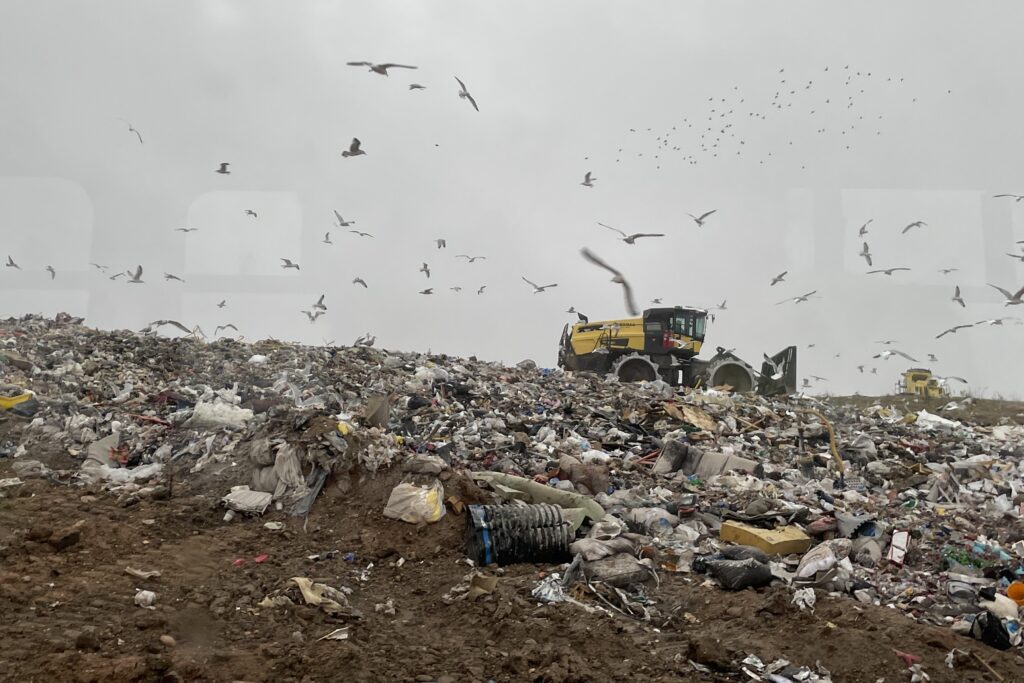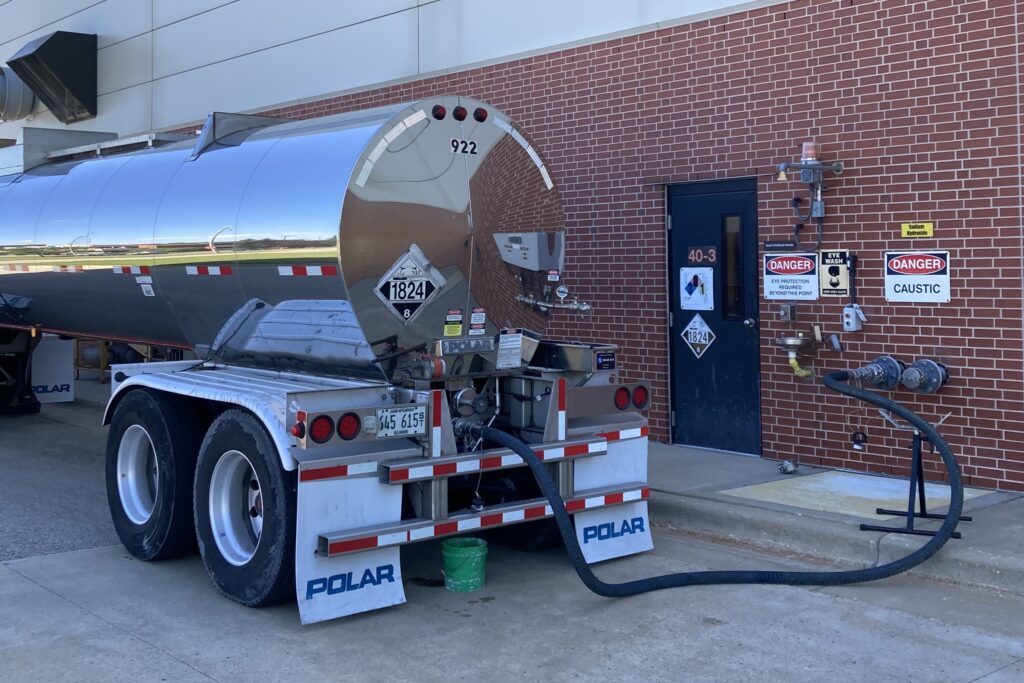
The business of what nobody wants could be a lonely one without partners. Landfills and wastewater treatment plants are in that business and in Dane County, the District and the Dane County Landfill (Landfill) have developed a good relationship to help one another solve waste problems.
“We are both trying to help each other get rid of the stuff that nobody else wants,” says Julie Maas, the District’s pretreatment coordinator. As one of the District’s industrial permittees, the Landfill sends us wastewater to process. In turn, we send the grit and garbage we screen out of all incoming wastewater (about 30 tons per week) to the Landfill.
The District and the Landfill also often work together on projects for other entities. For example, if the City of Madison has a dredging project, the two will work together to help handle the water and solids if processing is required. “We both serve the same people,” says Julie. “Our customers are their customers so we are all working to serve the same interests.”
Partners in pollution prevention
The District’s Pollution Prevention team also partners with staff at the Landfill’s Clean Sweep program, which works to keep household hazardous waste out of the landfill and the sewer system. They collaborate on organizing community household chemical collection events, share each other’s messaging and resources in outreach programs, and coordinate on efforts to keep mercury from small quantity generators like dental clinics out of the sewer system and waterways.
“Our organizations both preach the message ‘there is no away’,” says Catherine Harris, District pollution prevention specialist. “Waste doesn’t magically disappear – somebody, somewhere has to deal with it.”
Resource re-use and recovery mindset
In addition to partnering on outreach efforts and the day-to-day of waste processing, the Landfill and the District also share a common goal of recovering resources. Recently, a unique request came to Julie from the Landfill when they called to see if we could find a use for an excess load of chemical they had on hand. The chemical, sodium hydroxide, was one they used as a part of a biogas purification process they were decommissioning. We use it in our struvite harvesting process, which recovers nutrients like phosphorus from wastewater and turns it into a fertilizer.
“We have a friendly, collaborative relationship so they just thought, let’s see if the District can use this,” says Julie. As a hazardous chemical, the excess sodium hydroxide would need to be disposed of at a hazardous waste facility, an expensive and waste-generating solution. The Landfill offered to give us the sodium hydroxide load at no cost.

While cost savings would be an important part of the decision, Julie noted that resource recovery is a part of our mission. Taking it would avoid the transport and disposal of a hazardous chemical that still has use and value.
A practical but thoughtful decision
The ultimate decision was to be made by the Operations department, as it would impact plant operations. Alan Grooms, operations manager, worked on the details of determining if we could accept the sodium hydroxide load, which involved some investigation and logistical coordination with our regularly scheduled deliveries of sodium hydroxide. The Landfill’s load of sodium hydroxide was a lower grade of the chemical than what we specify for our use, but Alan determined a one-time delivery of the product would not have a noticeable impact on our processes.
Fostering the relationship between the Landfill and the District was also a motivator in Alan’s decision to accept the load. “We have times when we need assistance from them so we like to keep that relationship friendly,” he says.
As for the financial benefit, Alan estimates that taking the sodium hydroxide load saved the District between $6,000-$7,000 in chemical costs. While that may be a small number in the overall budget for operational chemicals, it represents something more complex.
“We’re trying to benefit the local environment, we saved them and their ratepayers an expense, so we moved the needle in the right direction,” says Alan. “We’ve got these big aspirational goals, but sometimes you have to think about the small moves in the right direction.”
Article written by Jessica Spiegel






